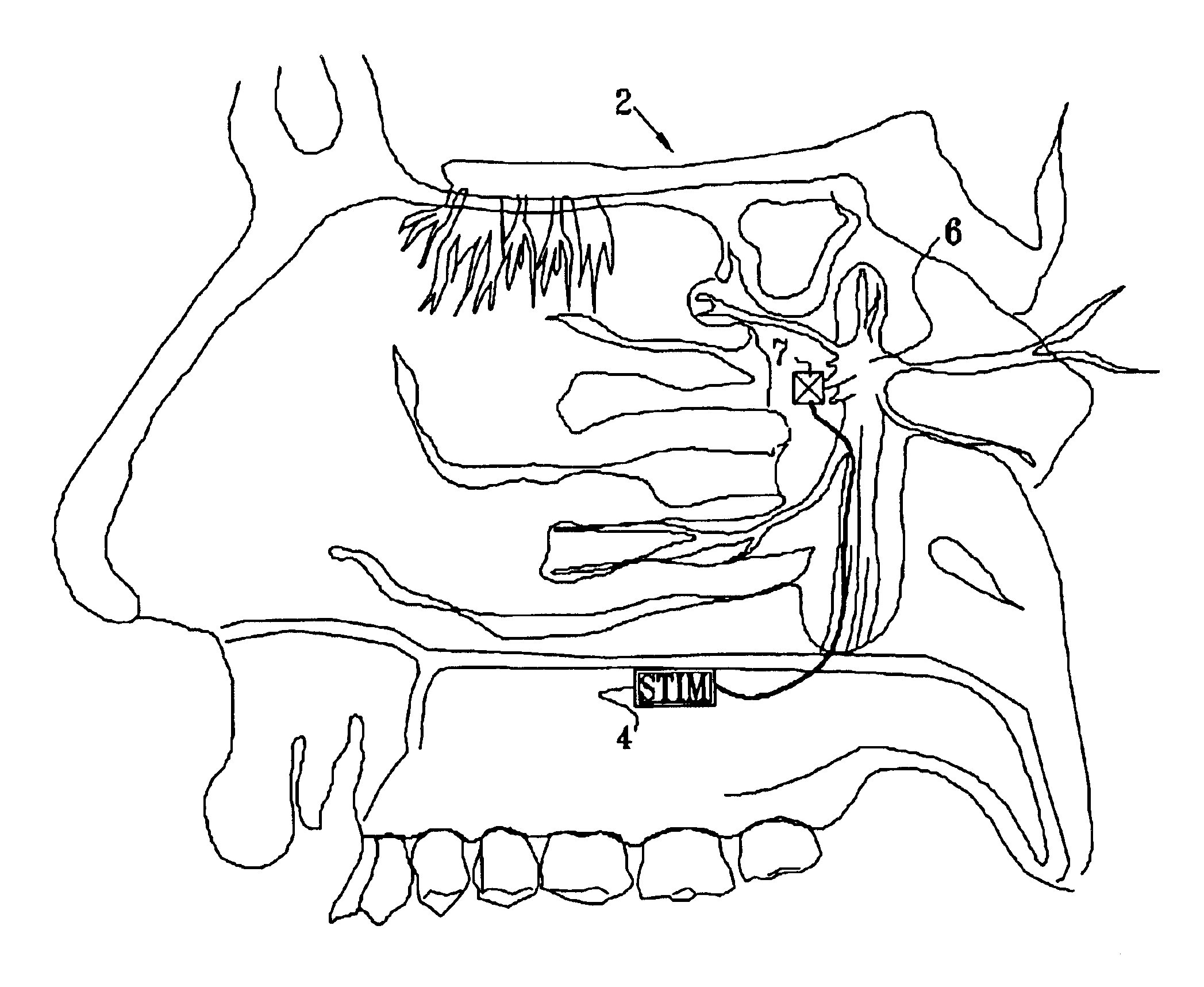Administration of anti-inflammatory drugs into the central nervous system
- Summary
- Abstract
- Description
- Claims
- Application Information
AI Technical Summary
Benefits of technology
Problems solved by technology
Method used
Image
Examples
Embodiment Construction
FIG. 1 is a schematic pictorial view of a fully-implantable stimulator 4, for stimulation of a “modulation target site” (MTS), as defined hereinbelow, such as a sphenopalatine ganglion (SPG) 6, in accordance with a preferred embodiments of the present invention. In FIG. 1, a human nasal cavity 2 is shown, and stimulator 4 is implanted between the hard palate and the mucoperiosteum (not shown) of the roof of the mouth. Branches of parasympathetic neurons coming from SPG 6 extend to the middle cerebral and anterior cerebral arteries (not shown). Preferably, one or more relatively short electrodes 7 extend from stimulator 4 to contact or to be in a vicinity of an MTS, such as SPG 6.
In the present patent application and the claims, a “modulation target site” consists of:a sphenopalatine ganglion (SPG) (also called a pterygopalatine ganglion);an anterior ethmoidal nerve;a posterior ethmoidal nerve;a communicating branch between the anterior ethmoidal nerve and the SPG (retro orbital bran...
PUM
 Login to View More
Login to View More Abstract
Description
Claims
Application Information
 Login to View More
Login to View More - R&D
- Intellectual Property
- Life Sciences
- Materials
- Tech Scout
- Unparalleled Data Quality
- Higher Quality Content
- 60% Fewer Hallucinations
Browse by: Latest US Patents, China's latest patents, Technical Efficacy Thesaurus, Application Domain, Technology Topic, Popular Technical Reports.
© 2025 PatSnap. All rights reserved.Legal|Privacy policy|Modern Slavery Act Transparency Statement|Sitemap|About US| Contact US: help@patsnap.com



